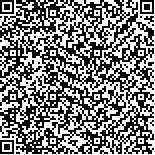| 引用本文: |
向兴刚, 周益凡, 依马木·依达依吐拉, 赵永, 买买江·阿不力孜, 林琳.基于内质网应激信号通路探讨熄风解痉汤对蛛网膜下腔出血大鼠早期脑损伤保护作用的机制研究[J].湖南中医药大学学报,2024,44(6):927-935[点击复制] |
|
| |
|
|
| 本文已被:浏览 1085次 下载 425次 |
| 基于内质网应激信号通路探讨熄风解痉汤对蛛网膜下腔出血大鼠早期脑损伤保护作用的机制研究 |
| 向兴刚,周益凡,依马木·依达依吐拉,赵永,买买江·阿不力孜,林琳 |
| (新疆维吾尔自治区中医医院, 新疆 乌鲁木齐 830000) |
| 摘要: |
| 目的 观察熄风解痉汤对早期蛛网膜下腔出血(subarachnoid hemorrhage, SAH)大鼠脑组织中内质网应激(endoplasmic reticulum stress,ERS)信号通路相关因子表达的影响,探讨熄风解痉汤对SAH大鼠早期脑损伤(early brain injury, EBI)的保护作用机制。方法 选取成年健康雄性SD大鼠168只,采用血管内穿刺法建立SAH模型,造模成功后按照随机数字表法分为对照组(等体积蒸馏水)、假手术组(等体积蒸馏水)、模型组(等体积蒸馏水)、尼莫地平组[10 mg/(kg·d)]、熄风解痉汤低剂量组[10.8 g/(kg·d)、熄风解痉汤高剂量组[43.2 g/(kg·d)]、尼莫地平[10 mg/(kg·d)]+熄风解痉汤[21.6 g/(kg·d)]组,每组24只,每12 h给药1次,连续用药72 h。采用Garcia神经功能评分评估神经功能受损程度;HE染色观察海马区神经细胞形态;TUNEL染色检测大鼠海马组织细胞凋亡情况;Western blot检测内质网应激相关标志物葡萄糖调节蛋白78(glucose regulatory protein 78, GRP78)、C/EBP同源蛋白(C/EBP homologous protein, CHOP)、胱天蛋白酶-12(cysteine aspartic acid specific protease-12, Caspase-12)蛋白的表达水平;计算脑组织含水量;EB染色检测血脑屏障通透性。结果 与对照组、假手术组比较,模型组海马区组织层次结构不清,各层细胞排列疏松,可见大量凋亡细胞;各时间点的海马区组织神经细胞凋亡比例、脑组织EB含量、脑组织含水量及 GRP78、CHOP、Caspase-12蛋白表达水平升高(P<0.05),Garcia神经功能评分减低(P<0.05)。与模型组比较,熄风解痉汤低、高剂量组大鼠海马区组织结构较模型组清晰,细胞凋亡数量减少;各时间点的海马区组织神经细胞凋亡比例、脑组织含水量及 GRP78、CHOP、Caspase-12蛋白表达水平降低(P<0.05),Garcia神经功能评分、脑组织EB含量升高(P<0.05)。结论 SAH后EBI过程中存在内质网应激反应,熄风解痉汤可降低内质网应激相关蛋白GRP78、CHOP、Caspase-12表达水平,提高EBI过程中大鼠的神经行为学评分,降低脑组织含水量,降低血脑屏障通透性。 |
| 关键词: 熄风解痉汤 蛛网膜下腔出血 早期脑损伤 内质网应激信号通路 内质网应激相关蛋白 |
| DOI:10.3969/j.issn.1674-070X.2024.06.001 |
| 投稿时间:2024-01-16 |
| 基金项目:新疆维吾尔自治区自然科学基金项目(2021D01C230)。 |
|
| Mechanism of protective effects of Xifeng Jiejing Decoction on early brain injury in rats with subarachnoid hemorrhage based on endoplasmic reticulum stress signaling pathway |
| XIANG Xinggang, ZHOU Yifan, YIMAMU Yidayitula, ZHAO Yong, MAIMAIJIANG Abulizi, LIN Lin |
| (Traditional Chinese Medical Hospital of Xinjiang Uygur Autonomous Region, Urumqi, Xinjiang 830000, China) |
| Abstract: |
| Objective To observe the effects of Xifeng Jiejing Decoction (XFJJD) on the expression of endoplasmic reticulum stress (ER stress) signaling pathway-related factors in the brain tissue of rats with early subarachnoid hemorrhage (SAH), and to explore the protective mechanism of XFJJD on early brain injury (EBI) in SAH rats. Methods A total of 168 healthy adult male SD rats were selected to establish the SAH model by intravascular puncture. After successful modeling, the rats were divided into control group (an equal volume of distilled water), sham-operated group (an equal volume of distilled water), model group (an equal volume of distilled water), nimodipine group [10 mg/(kg·d)], and low-dose XFJJD [10.8 g/(kg·d)], high-dose XFJJD group [43.2 g/(kg·d)], and nimodipine [10 mg/(kg·d)]+XFJJD group [21.6 g/(kg·d)] by random number table method, with 24 rats in each group. Each group was administered once every 12 h for 72 h continuously. The degree of neurological impairment was assessed by Garcia score; the morphology of hippocampal nerve cells was observed by HE staining; TUNEL staining was performed to determine the apoptosis of hippocampal cells in rats; Western blot was used to check the expression levels of endoplasmic reticulum stress-related markers, including glucose regulatory protein 78 (GRP78), C/EBP homologous protein (CHOP), and cysteine aspartic acid specific protease-12 (cysteine-12); the water content of brain tissue was calculated; EB staining was used to examine the permeability of the blood-brain barrier. Results Compared with the control group and the sham-operated group, the model group exhibited unclear hierarchical structure of the hippocampus, loose arrangement of cells in each layer, and a large number of apoptotic cells; the proportion of apoptosis of hippocampal nerve cells, the EB content and water content of the brain tissue, as well as the protein expression levels of GRP78, CHOP, and Caspase-12 in the hippocampus increased at various time points (P<0.05), while the Garcia score decreased (P<0.05). Compared with the model group, the low- and high-dose XFJJD groups showed clearer hippocampal tissue structure and reduced number of apoptotic cells; the proportion of apoptosis of hippocampal nerve cells, water content of brain tissue, and the protein expression levels of GRP78, CHOP, and Caspase-12 decreased at various time points (P<0.05), while the Garcia score and EB content of brain tissue increased (P<0.05). Conclusion Endoplasmic reticulum stress reaction occurs during the EBI process after SAH. XFJJD can reduce the expression levels of endoplasmic reticulum stress-related proteins including GRP78, CHOP, and Caspase-12, improve neurobehavioral scores of rats during EBI process, lower the water content of brain tissue, and reduce the permeability of blood-brain barrier. |
| Key words: Xifeng Jiejing Decoction subarachnoid hemorrhage early brain injury endoplasmic reticulum stress signaling pathway endoplasmic reticulum stress-related proteins |
|

二维码(扫一下试试看!) |
|
|
|
|




